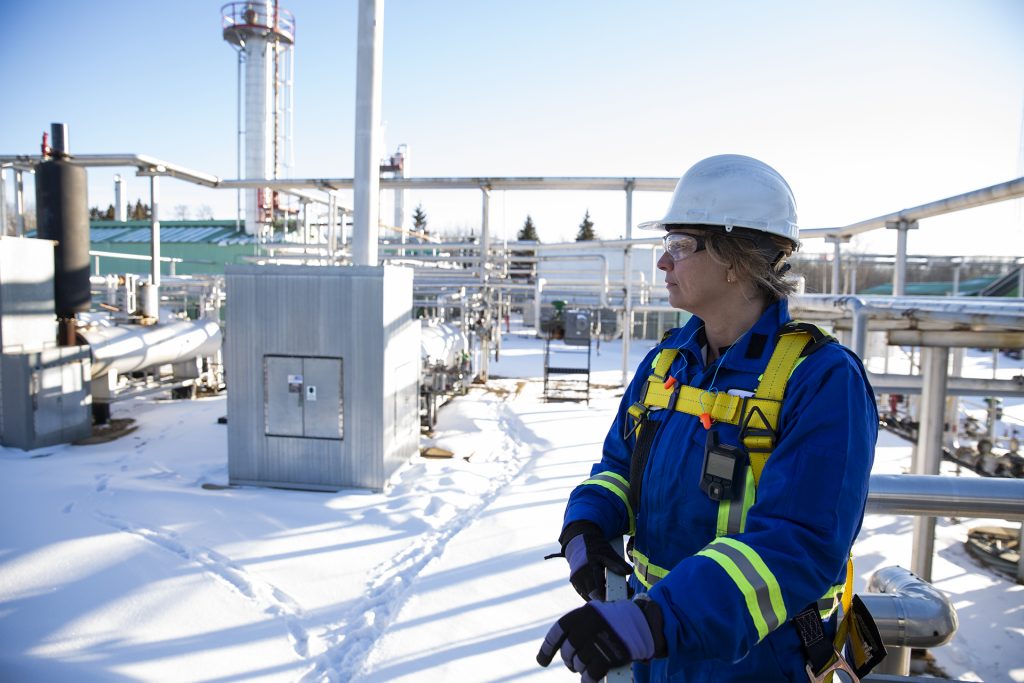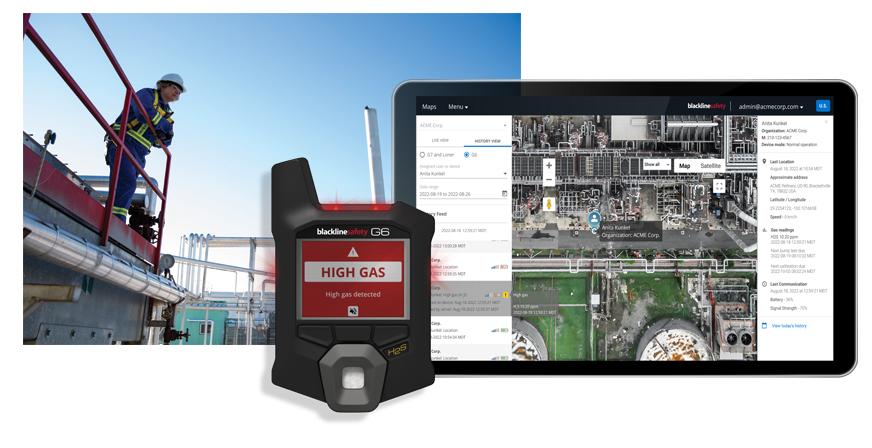
Connected gas detection isn’t the tech of the future anymore. It’s right here, right now, and more money-saving, sustainable and simple than you think. In fact, in today’s industrial workplace, if you’re a safety or operations manager looking to build or sustain a robust safety culture, it’s no longer a nice-to-have, but a must-have. Whether you work in oil and gas, petrochemicals, renewable energy, utilities or other industries with a wide spectrum of safety needs, knowing how connected safety can amplify your HSE program – no matter how basic the application – is key to moving beyond compliance.
Take single-gas detection as an example.
You may think traditional beep-and-flash disposable gas detectors are meeting your needs – but are you looking at the bigger picture? Connected safety solutions, like Blackline’s G6, provide vital data that not only streamlines your incident response process, but also enables you to get ahead of risks – all while improving compliance and operational efficiency.
But what about the added costs?
We’ve got that covered too. There are many variables to consider when looking at the total cost of ownership (TCO) of your safety program. Reducing lost devices and false alarms is just the beginning of how connected safety solutions cut costs and provide long-term value for companies using single-gas detectors.
The current state of single-gas detection
Traditional single-gas detection solutions are hardware-driven. Specifically, personal gas monitor alarms only notify the device wearer that they have encountered a hazardous atmosphere. Safety managers also need to conduct manual assessments across a worksite to identify problem areas, inspect infrastructure and gather gas exposure testimony from employees. However, this approach can result in oversights – leading to gas detection risks and gaps in workplace safety.
For example, by only relying on local sensor readings and workers reporting that information, you may miss a developing pattern of hazardous gas readings. For first-generation gas detection systems that do collect data, it’s often inaccessible until the device is docked – with no real-time visibility of atmospheric conditions or worker safety.
“Main focus is using data collected for emission reporting to state and federal agencies.”
“{Data} is only received if there is an incident. It stays on the monitor. If there is a leak, they will pull the data and only in the event of an incident.”
– HSE Managers (Priority Metrics Group, 2022)

In a survey of 100 HSE managers in North America1, the most frequently measured gases reported were H2S, CO, O2 and combustible gases (LEL). While over 2/3 of respondents employed single-gas detectors that generate data, most used the information for routine internal or external reporting 20% said they only use the data when there is an alarm or incident.
What is connected safety?
Connected safety solutions combine gas detection devices with location technology and cloud-based software and data analytics. Together they reveal real-time gas exposure levels alongside worker location and condition.
This gives safety and operations managers full visibility through an online dashboard – accessible anywhere, anytime – without needing to wait until a device is docked to receive the data. Data analytics can then identify areas of potential hazards based on repeated alarms or below alarm level gas exposures, so corrective action can be taken before they become an incident.
Why use connected safety for single-gas detection?
Connected safety keeps you from having to do the manual guesswork of determining gas presence based on testimony or data from docked single-gas detectors that only tell a delayed part of the story.
By using cloud-enabled safety devices and analytics reports, you can work to mitigate and even eliminate safety risks by:
- Accessing real-time information to quickly respond to incidents
- Creating preventive safety protocols and processes based on analysis of accurate data
- Proactively managing worker and device compliance and reporting

DCP Midstream, a Fortune 500 company and one of the largest producers and processors of natural gas liquids (NGLs) in the U.S. decreased its total recordable injury rate by 44% from 2016 to 2019 by employing cloud-connected devices for gas detection and lone worker monitoring (IHWorkplace).
Let’s break down these benefits one-by-one:
1. Streamline incident response
Connected safety devices provide accurate location information of your workers on your dashboard – in-real-time should an incident occur. This enables you to quickly respond to individual incidents or enact emergency response and evacuation procedures.
2. Enable proactive safety
Connected safety lets you leverage insights from vital information and trustworthy data to reduce incidents. For example, by creating more effective preventive safety protocols and processes. Having full visibility of your workers lets you scale your safety program across worksites and facilities. You can also identify focus areas where additional worker training should be implemented.
3. Improve compliance
Connected safety delivers a single source of data to tell which devices in the field are compliant – or not. With simple bump test and calibration, the accountability for a compliant device can be put on workers to ensure they maintain the device to your company’s set schedule. With a dashboard that shows the real-time bump test and calibration status of your full device fleet, you can focus on those that are out of compliance.

What Safety and Operational Managers are Saying
75% said there is significant value in a single-gas detector with expanded features. The top desired capabilities included longer life, reduced false alarms and device location.
Make sure to check out part 2 next month when we’ll discuss how connected single-gas detectors benefit Total Cost of Ownership of and contribute to your organization’s sustainability goals.
Transform your single-gas detection program with Blackline Safety’s all new G6 connected single-gas detector.
LEARN MORE
Share This:




 CDN NEWS |
CDN NEWS |  US NEWS
US NEWS 
























